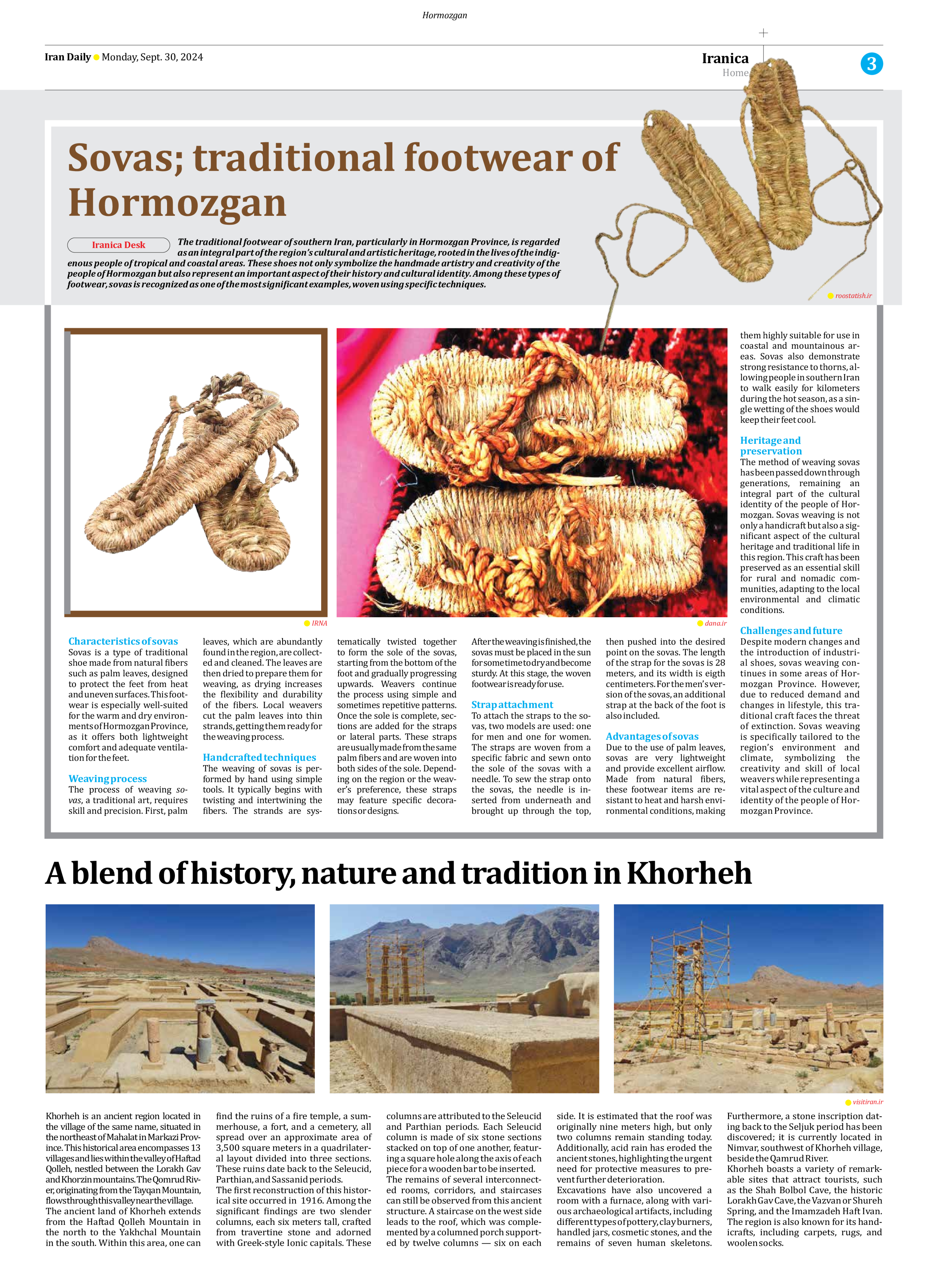
Copy in clipboard...
A blend of history, nature and tradition in Khorheh
The ancient land of Khorheh extends from the Haftad Qolleh Mountain in the north to the Yakhchal Mountain in the south. Within this area, one can find the ruins of a fire temple, a summerhouse, a fort, and a cemetery, all spread over an approximate area of 3,500 square meters in a quadrilateral layout divided into three sections. These ruins date back to the Seleucid, Parthian, and Sassanid periods.
The first reconstruction of this historical site occurred in 1916. Among the significant findings are two slender columns, each six meters tall, crafted from travertine stone and adorned with Greek-style Ionic capitals. These columns are attributed to the Seleucid and Parthian periods. Each Seleucid column is made of six stone sections stacked on top of one another, featuring a square hole along the axis of each piece for a wooden bar to be inserted.
The remains of several interconnected rooms, corridors, and staircases can still be observed from this ancient structure. A staircase on the west side leads to the roof, which was complemented by a columned porch supported by twelve columns — six on each side. It is estimated that the roof was originally nine meters high, but only two columns remain standing today. Additionally, acid rain has eroded the ancient stones, highlighting the urgent need for protective measures to prevent further deterioration.
Excavations have also uncovered a room with a furnace, along with various archaeological artifacts, including different types of pottery, clay burners, handled jars, cosmetic stones, and the remains of seven human skeletons. Furthermore, a stone inscription dating back to the Seljuk period has been discovered; it is currently located in Nimvar, southwest of Khorheh village, beside the Qamrud River.
Khorheh boasts a variety of remarkable sites that attract tourists, such as the Shah Bolbol Cave, the historic Lorakh Gav Cave, the Vazvan or Shureh Spring, and the Imamzadeh Haft Ivan. The region is also known for its handicrafts, including carpets, rugs, and woolen socks.







